Nestled in the heart of the Eastern Himalayas, Bhutan is a country that feels like a secret whispered between mountains. Picture-perfect monasteries clinging to cliffs, misty valleys speckled with prayer flags, and locals adorned in traditional attire create a dreamlike canvas that begs to be photographed. If you’re planning your first trip to Bhutan and want your camera roll to do justice to the beauty around you, this guide will take you through the most Instagrammable spots in the kingdom—complete with storytelling, local tips, and all the practical info you need.
Whether you’re chasing golden-hour light in a valley or capturing colorful tsechu festivals, Bhutan offers an unfiltered slice of magic in every frame. Here’s where to start.
1. Tiger’s Nest Monastery (Paro)
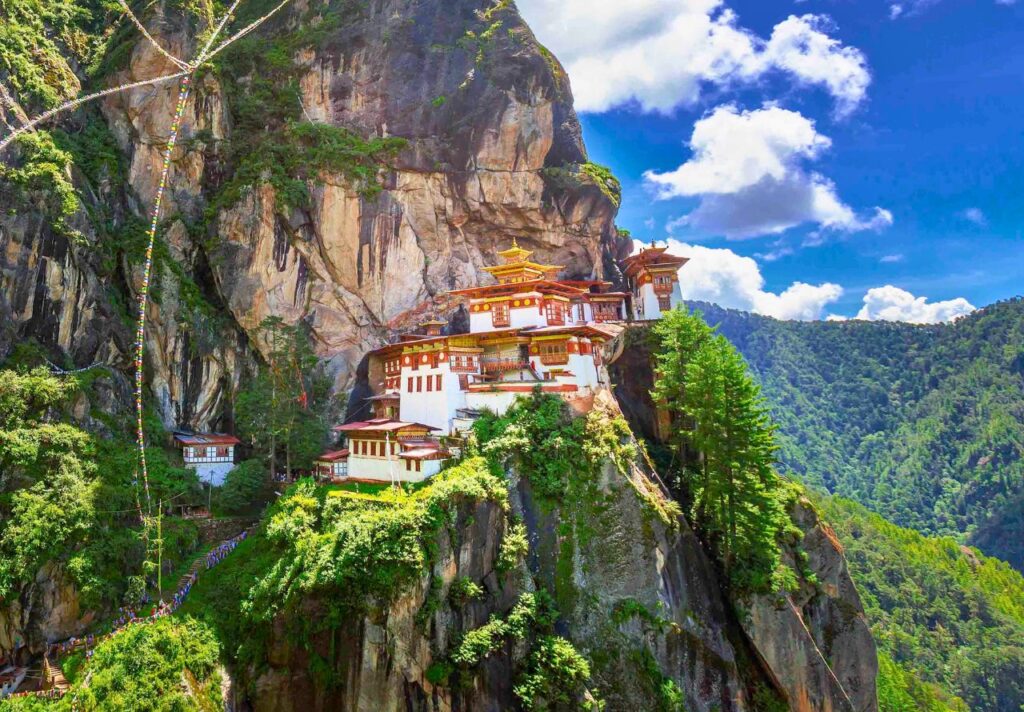
Location: Paro Valley
Entry Fee: Included in daily tourism tariff (US$100/day)
Best Time to Shoot: Early morning for soft light and fewer tourists
Almost floating on a sheer cliff face, 900 meters above the Paro Valley floor, Taktsang Monastery—popularly known as Tiger’s Nest—is the crown jewel of Bhutanese imagery. The 6.4 km (4-mile) hike winds through pine forests perfumed with incense smoke and fluttering prayer flags. The final reveal, with the monastery perched like a miracle on stone, is the shot you’ll treasure forever.
Photography Tips:
- Pack a zoom lens for close-up cliff shots without drone use (drones are banned in Bhutan).
- Snap some photos from the mid-point teahouse for a classic wide-angle view.
Local Insight: Ask your guide to time the visit so you reach the top around 9 AM—you’ll beat the main tourist rush and catch the golden light dancing off the white walls.
2. Punakha Dzong
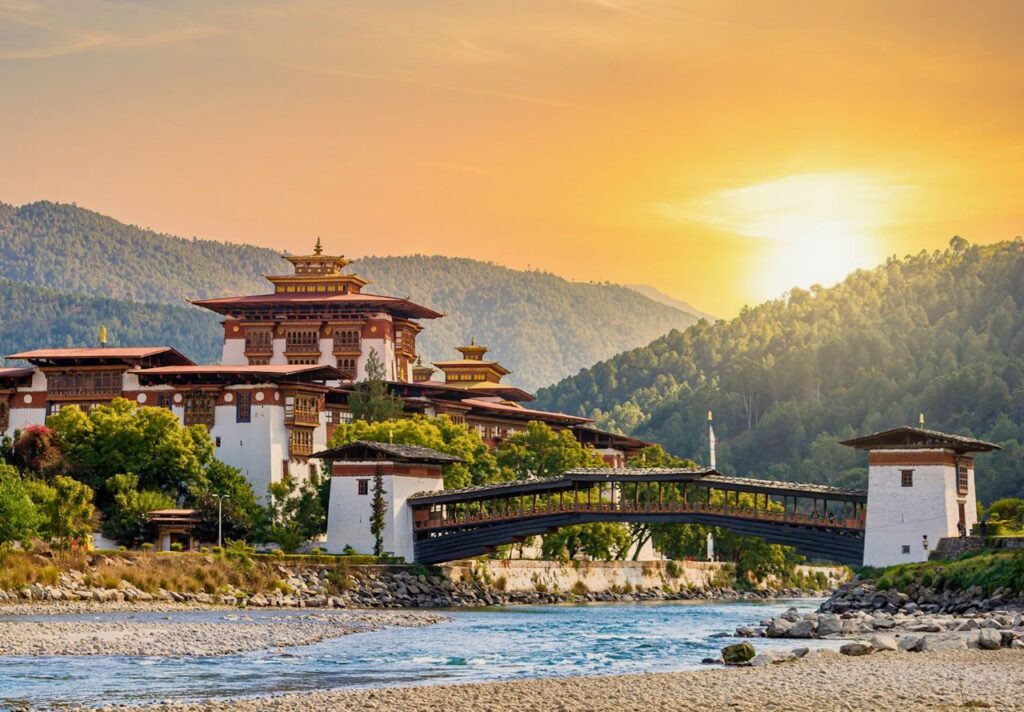
Location: Punakha District
Entry Fee: Included in daily tourism tariff
Best Time to Shoot: Late morning or early afternoon when jacaranda trees bloom (May–June)
Known as the “Palace of Great Happiness,” Punakha Dzong is Bhutan’s most photogenic fortress. Built at the confluence of two rivers, it’s framed by lavender-hued jacaranda blossoms and flanked by a 160-meter-long prayer flag-draped suspension bridge.
Photography Tips:
- Use the bridge as a leading line to frame your shots.
- Capture reflections in the calm waters during low wind conditions.
Local Insight: Wear your finest kira or gho and ask a guide to photograph you standing at the bridge’s center for a regal portrait. Bhutanese traditional attire adds vibrant contrast to the scene.
3. Dochula Pass & 108 Chortens
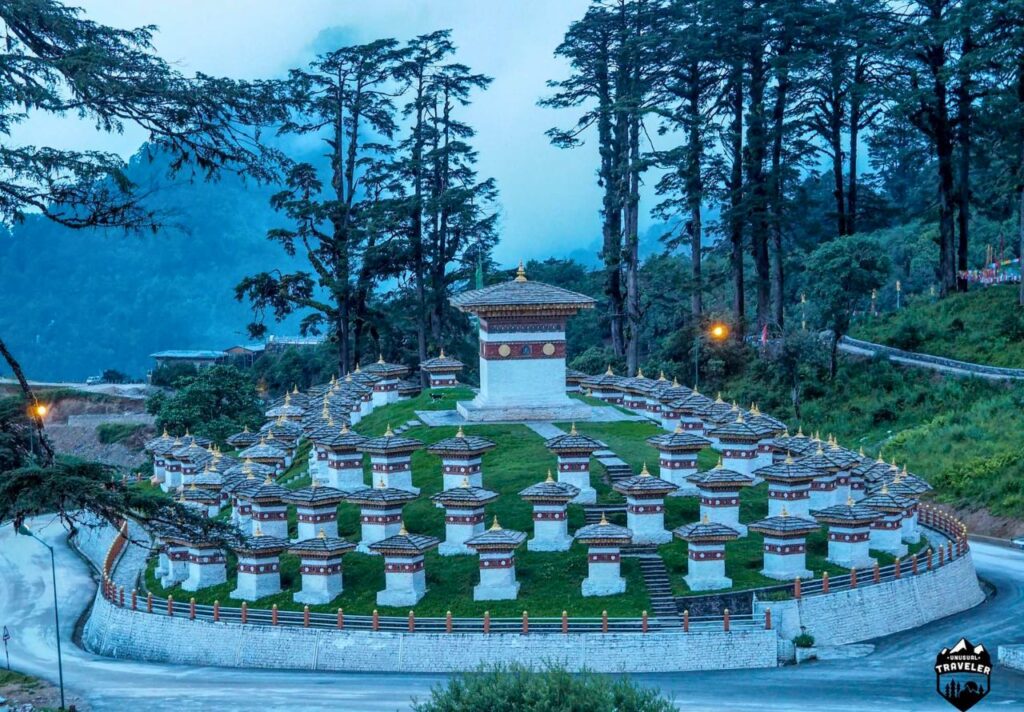
Location: On the road between Thimphu and Punakha
Entry Fee: Free
Best Time to Shoot: Early morning on clear days (October–March)
Perched at 3,100 meters, Dochula Pass offers one of Bhutan’s most iconic vistas. The 108 white-washed chortens (stupas), built in honor of fallen soldiers, sit like chess pieces against a Himalayan backdrop. On a clear day, you’ll see snow-draped peaks piercing the sky.
Photography Tips:
- Use a wide-angle lens to include both the chortens and the distant mountains.
- Early morning mist adds mood; wait for the sun to gently burn it off.
Local Insight: Visit during Druk Wangyel Festival in December for dramatic photos of masked dancers with the chortens in the background.
4. Haa Valley
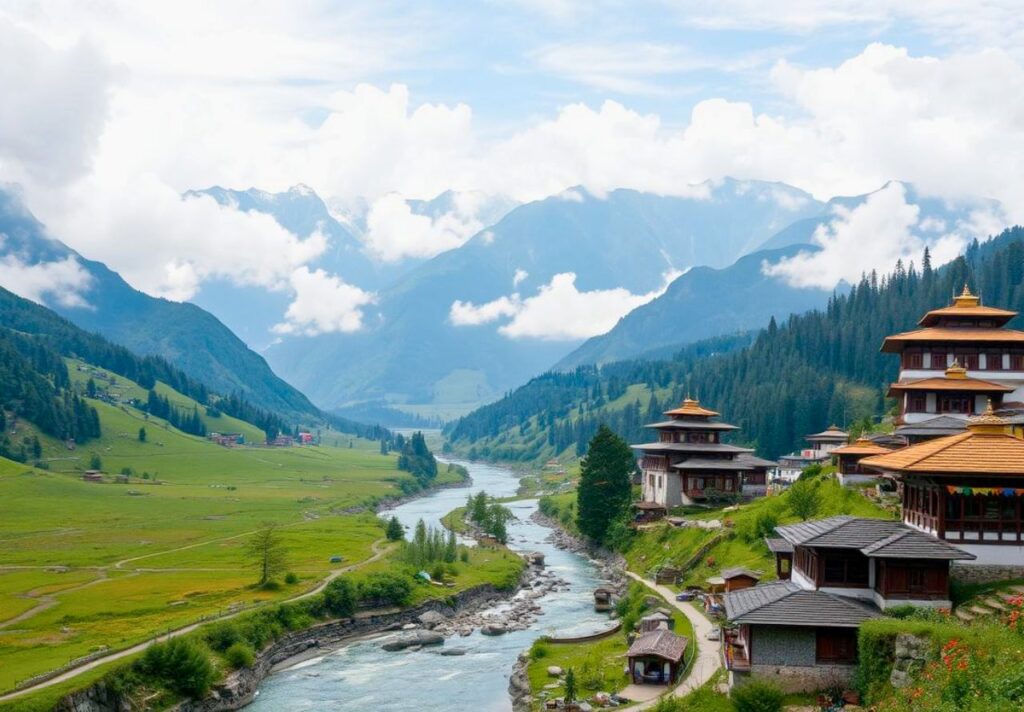
Location: Haa District (3 hours from Paro)
Entry Fee: Included in tourism tariff
Best Time to Shoot: Anytime from April to October when the valley is lush
Often overlooked, Haa Valley is Bhutan at its most unspoiled. Pine forests, tiny hamlets, and serene rivers weave together an Eden of tranquility. The panoramic hiking trail here gifts you endless composition opportunities.
Photography Tips:
- Capture yaks grazing on alpine meadows for that National Geographic feel.
- Play with light through the forest canopy.
Local Insight: Haa Valley is a great place for lifestyle and portrait photography. Locals are friendly, and traditional homes provide rustic backdrops.
5. Phobjikha Valley
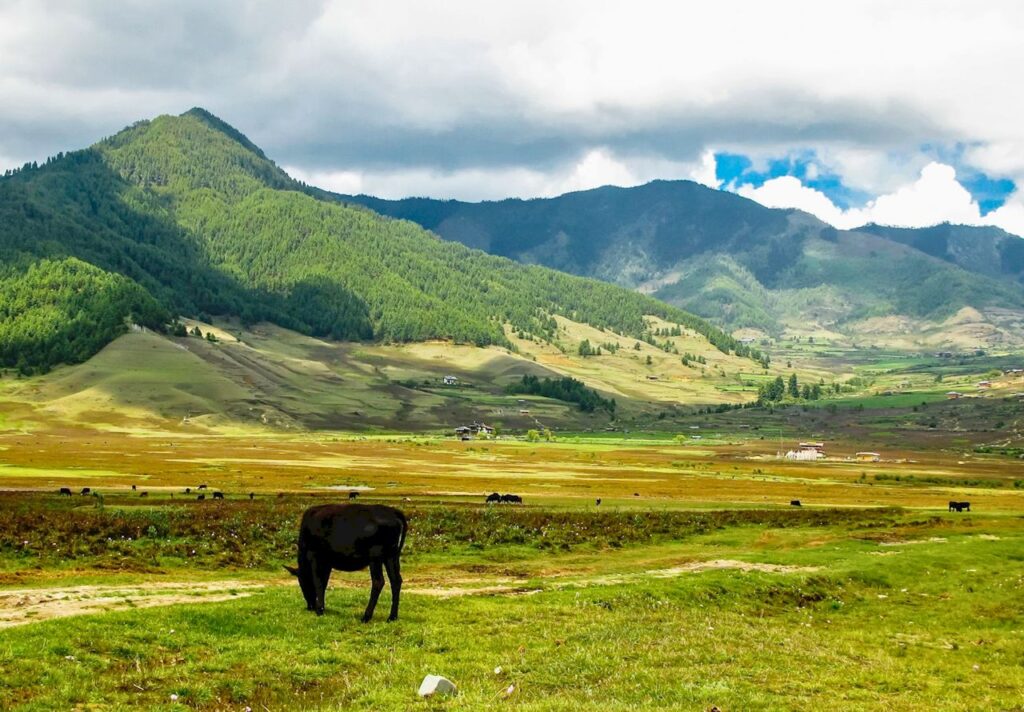
Location: Wangdue Phodrang District
Entry Fee: Included in daily tourism tariff
Best Time to Shoot: October to March for black-necked cranes; April for wildflowers
Encircled by mountains and blanketed with rhododendron and dwarf bamboo, Phobjikha Valley is one of Bhutan’s most photogenic natural scenes. It’s also home to the endangered black-necked crane, adding both rarity and wonder to your shots.
Photography Tips:
- Use a long lens to photograph the cranes from a distance without disturbing them.
- The Gangtey Nature Trail offers multiple scenic overlooks and forest clearings.
Local Insight: Visit the Black-Necked Crane Center for educational shots and to understand the valley’s ecological importance.
6. Thimphu Buddha Dordenma
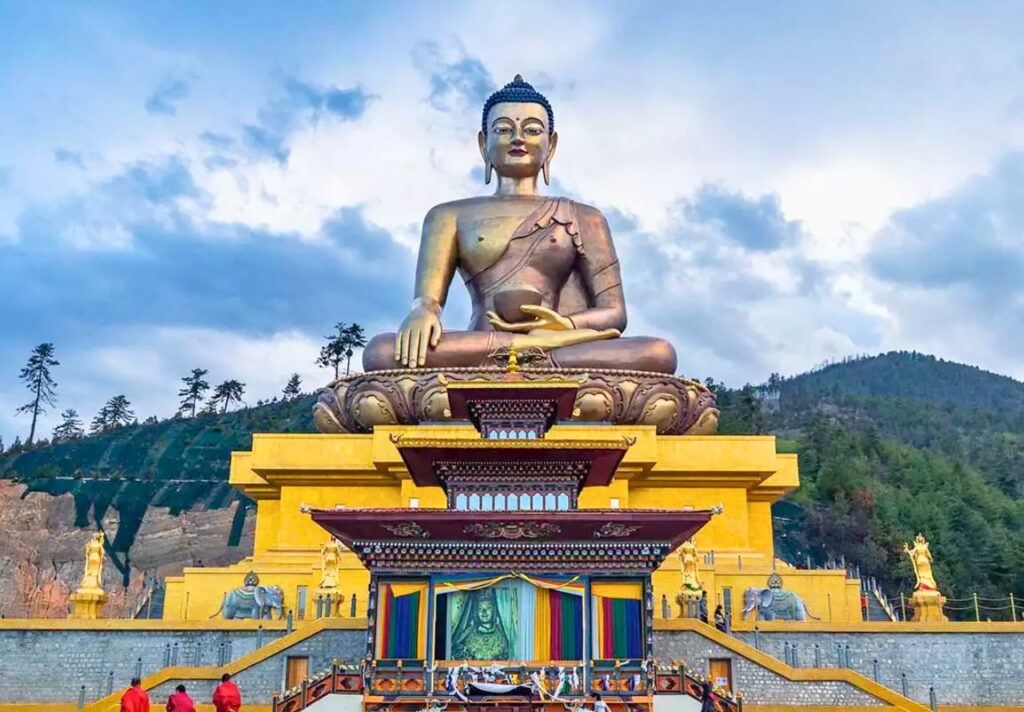
Location: Thimphu City
Entry Fee: Free
Best Time to Shoot: Late afternoon for golden light
This massive seated Buddha, standing 54 meters tall, watches over the capital city from a serene hillside. It’s a magnet for photographers thanks to its sheer scale and the dramatic clouds that often gather behind it.
Photography Tips:
- Shoot from below for a monumental angle.
- Sunset light reflecting off the gold-plated statue creates radiant images.
Local Insight: Arrive just before dusk when the statue lights up from within. It glows against the twilight sky, perfect for silhouette shots.
7. Khoma Village (Lhuentse)

Location: Lhuentse District, Eastern Bhutan
Entry Fee: Included in tourism tariff
Best Time to Shoot: Morning and late afternoon
Hidden in eastern Bhutan, Khoma is the kingdom’s weaving capital. Women in traditional attire create colorful textiles using ancient techniques, and the village itself, with its wooden homes and flower-lined paths, is postcard-perfect.
Photography Tips:
- Focus on hands at work for intimate storytelling.
- Natural lighting through doorways adds depth to interior shots.
Local Insight: Ask your guide to arrange a weaving demonstration—an ethical and engaging way to support local artisans while capturing authentic moments.
8. Bumthang Valley
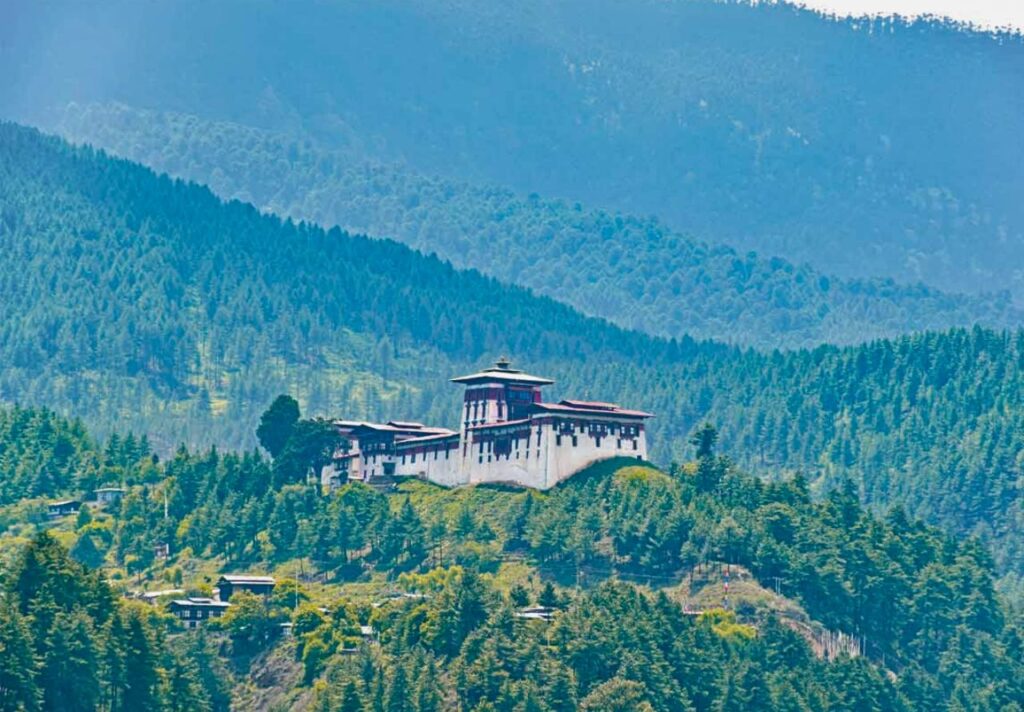
Location: Bumthang District
Entry Fee: Included in tourism tariff
Best Time to Shoot: Autumn (September to November) for vibrant colors
Often called the spiritual heartland of Bhutan, Bumthang Valley is a blend of farm life, monasteries, and mountain views. Fields of buckwheat flowers, serene temples like Jambay Lhakhang, and sleepy townships make this region a photography haven.
Photography Tips:
- Photograph traditional farmhouses with crops in the foreground.
- Use leading lines from trails or rivers for landscape shots.
Local Insight: Time your visit during the Jakar Tsechu for colorful masked dances and vibrant scenes of celebration.
9. Royal Botanical Park, Lamperi
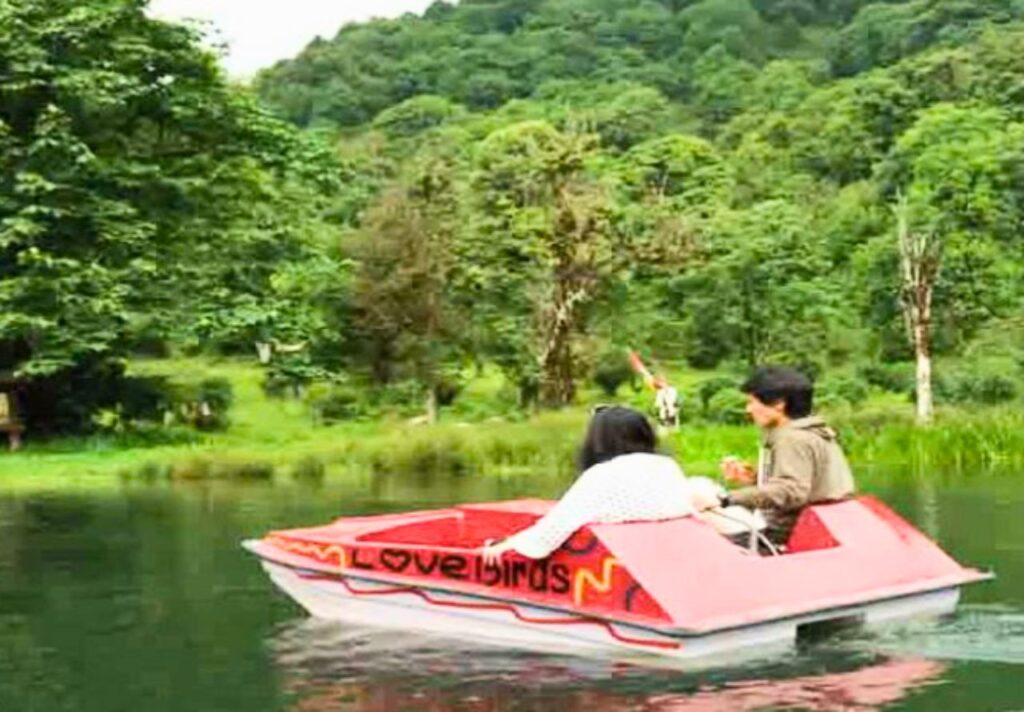
Location: On the road between Thimphu and Punakha
Entry Fee: BTN 200 (approx. US$2.50)
Best Time to Shoot: Spring (March–May) during rhododendron bloom
A riot of colors bursts into life every spring in Bhutan’s only botanical park. The park’s tranquil lake, manicured trails, and over 40 species of rhododendrons make it ideal for nature photography.
Photography Tips:
- Use macro lenses for flower photography.
- Reflections in the park’s central lake are stunning at dawn.
Local Insight: Pack a picnic and take your time. The park is often empty, giving you freedom to compose your shots without interruption.
10. Local Tsechus (Festivals)
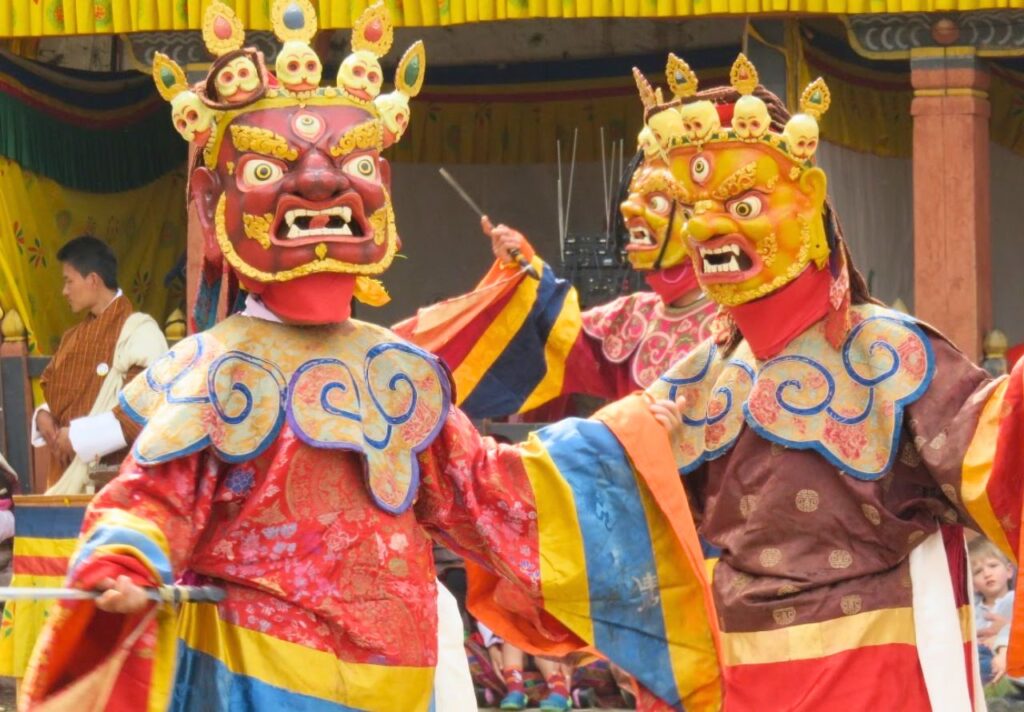
Location: Various dzongs and towns (Paro, Thimphu, Bumthang, etc.)
Entry Fee: Included in daily tariff
Best Time to Shoot: Paro Tsechu (March/April) and Thimphu Tsechu (September/October)
Vibrant colors, swirling robes, gilded masks, and spiritual energy define Bhutanese tsechus. These religious festivals are among the most visually stunning events in the Himalayas.
Photography Tips:
- Zoom in for expressive portraits of masked dancers.
- Use burst mode to capture dynamic movement.
Local Insight: Dress modestly and observe respectfully. Locals appreciate visitors who show reverence for the spiritual significance of the rituals.
Overview
| Location | Region | Ideal Time to Visit | Highlight |
|---|---|---|---|
| Tiger’s Nest Monastery | Paro | Early morning | Cliff-side monastery views |
| Punakha Dzong | Punakha | May–June (jacaranda) | Fortress by river |
| Dochula Pass | Between Thimphu & Punakha | Winter (Oct–Mar) | 108 stupas, mountain views |
| Haa Valley | Haa District | April–October | Lush landscapes, hiking trails |
| Phobjikha Valley | Wangdue Phodrang | Oct–Mar (cranes) | Nature, birdlife, monasteries |
| Buddha Dordenma | Thimphu | Late afternoon | Giant statue, city views |
| Khoma Village | Lhuentse | Morning/afternoon | Weaving, traditional homes |
| Bumthang Valley | Bumthang | Autumn | Spirituality, farm scenes |
| Lamperi Botanical Park | Near Dochula | Spring | Rhododendrons, lake reflections |
| Local Festivals | Various | Seasonal (see above) | Mask dances, vibrant costumes |
Final Tips for Instagrammable Travel in Bhutan
- Dress Respectfully: Bhutanese culture values modesty. Traditional attire (gho and kira) is both photogenic and respectful.
- Avoid Drones: Drones are prohibited unless special permits are obtained. Use zoom lenses instead.
- Golden Hour is King: With its high-altitude light, Bhutan glows most beautifully at sunrise and sunset.
- Ask First: Always seek permission before photographing people, especially monks or during ceremonies.
- Take It Slow: Bhutan isn’t meant to be rushed. The best photos come when you slow down and immerse yourself.
Bhutan is more than just a destination—it’s a feeling. And through your lens, you’ll carry home not just images, but stories etched in color, light, and wonder. Happy shooting!

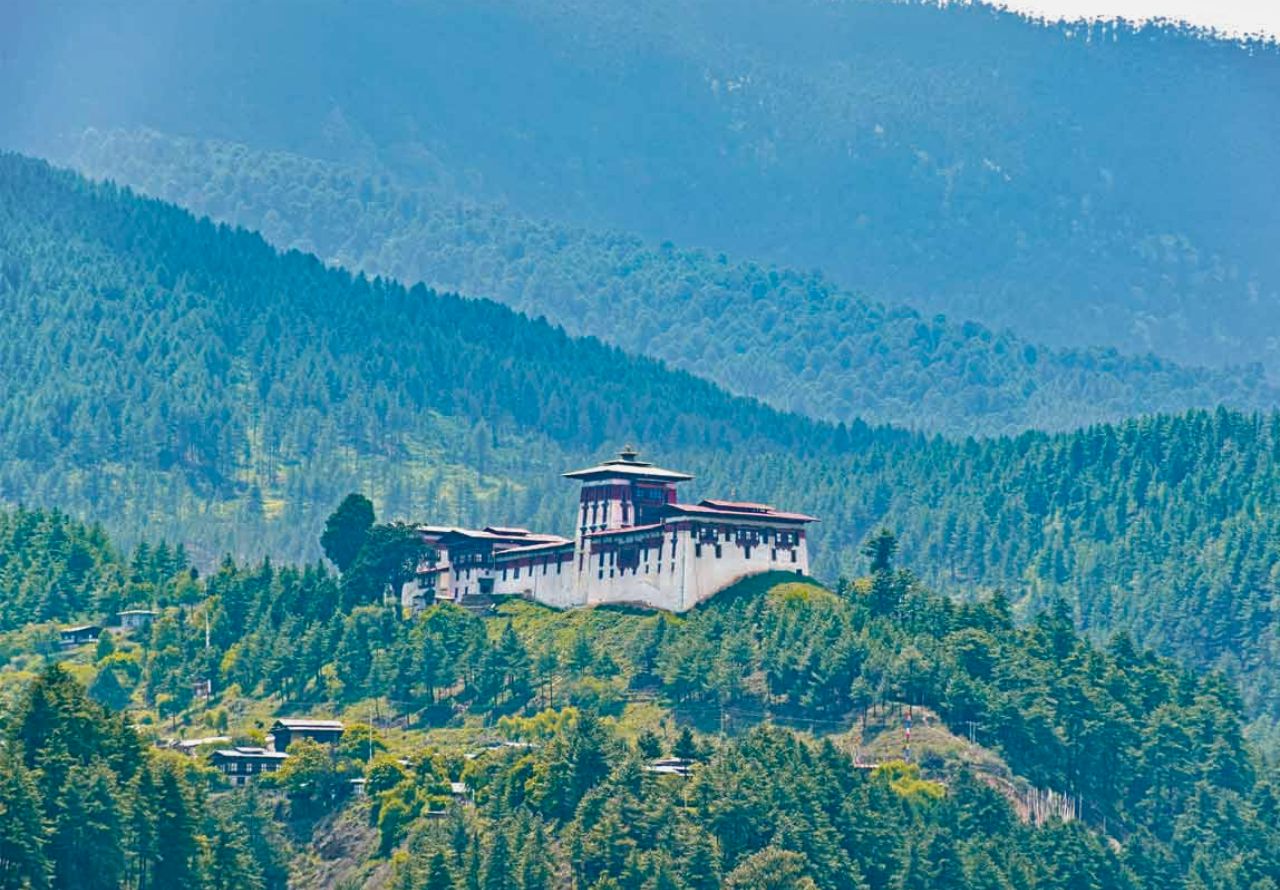
Leave a Reply